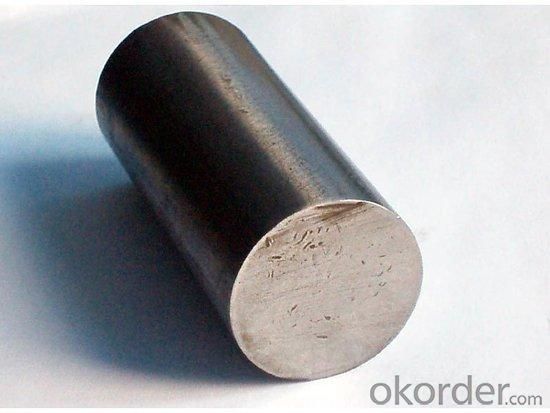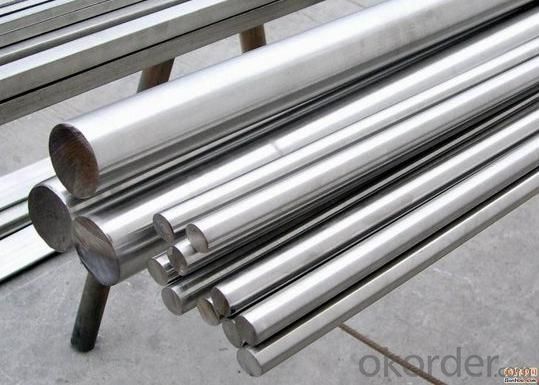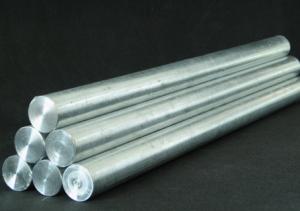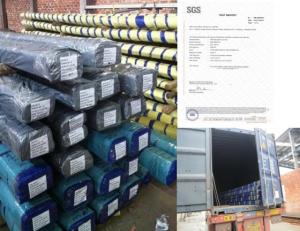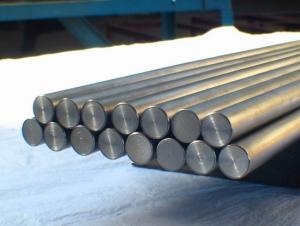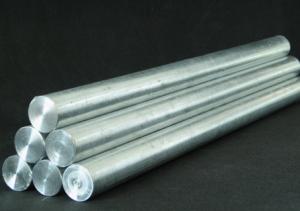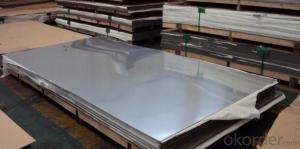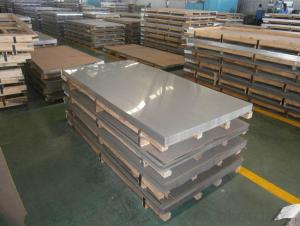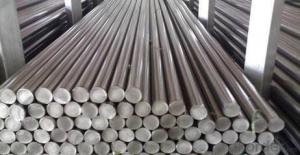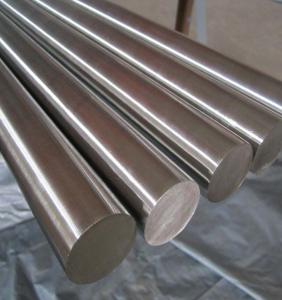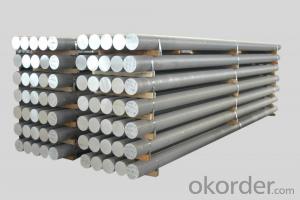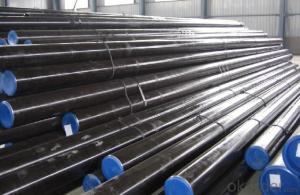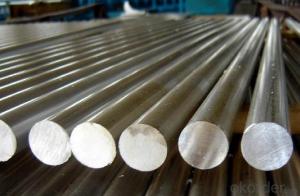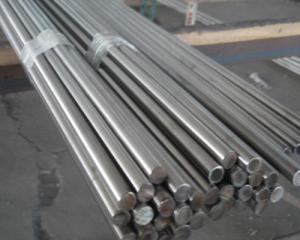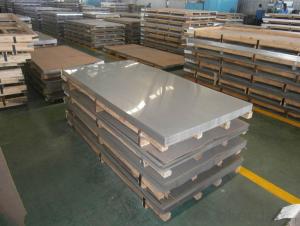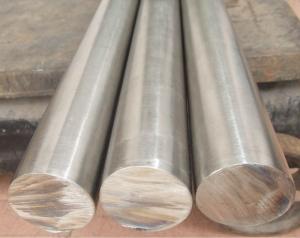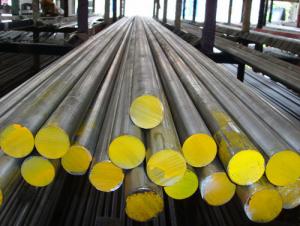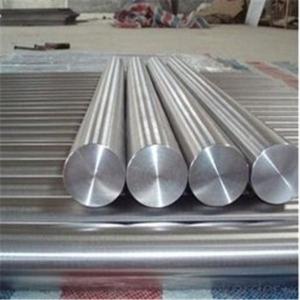304 Stainless Steel Bar
- Loading Port:
- Shanghai Port
- Payment Terms:
- TT or LC
- Min Order Qty:
- 5 Tons m.t.
- Supply Capability:
- 1000 Tons Per Month m.t./month
OKorder Service Pledge
OKorder Financial Service
You Might Also Like
Introduction of 304 Stainless Steel Bar:
Stainless steel is a production which not easy rust, acid resistance and corrosion resistance, so it is widely used in light industry, heavy industry, daily necessities and the decoration industry.my company long-term supply stainless steel porducts including: stainless steel sheet, stainless steel coil and stainless steel tube.
Details of 304 Stainless Steel Bar(Cold Drawing Polished):
*DIA 10mm to 130mm
*FORGE
*DIA 130mm to 300mm
*GB1220,ASTM A 484/484M, EN 10060/ DIN 1013
*DIA 3mm to 60mm
Main operation | Main steel grade | Available size(mm) | Monthly capacity(mt) | Length(mm) | |
OEM | Stainless steel | 40~500 | 1500 | 4000~8000 | |
Hot | 303 303Cu 304/L 310S 316/L 321 416 420 | 12 ~200 | 3000 | 4000~7000 | |
17-4PH WLA510 | 19~110 | 2000 | 4000~7000 | ||
ST Bar | 321 304/L 316/L 310S 17-4PH WLA510 | 19~110 | 2000 | 4000~7000 | |
CD Bar | Round bar | 303 303CU 304/L 316/L 416 420 17-4PH WLA510 | 4.76~100 | 500 | 2500~6500 |
Square bar | 303 303CU 304/L 316/L 416 17-4PH WLA510 | 4.76~75 | 180 | 2500~6500 | |
Hex bar | 303 303CU 304/L 316/L 416 17-4PH WLA510 | 4.76~75 | 180 | 2500~6500 | |
CG Bar | 303 303CU 304/L 316/L 416 420 17-4PH WLA510 | 4.76~100 | 500 | 2500~6500 | |
Features of 304 Stainless Steel Bar:
*Low density
*High specific strength
*High corrosion resistance
*Good thermal stability and plasticity
*It is widely applied for petroleum, chemical, mechanical and electrical, hardware, etc.
Quality assurance of 304 Stainless Steel Bar:
All of the products are detected by ultrasound making sure that no defects inside the products. Besides, chemical composition, mechanical properties and high-powered organization are also strictly controlled, ensuring our clients get the best products.
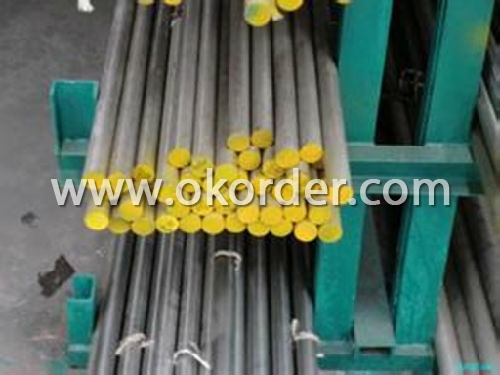
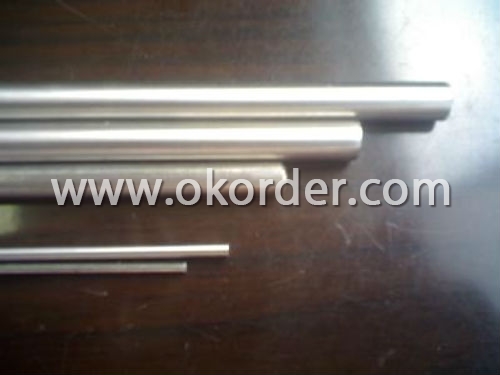
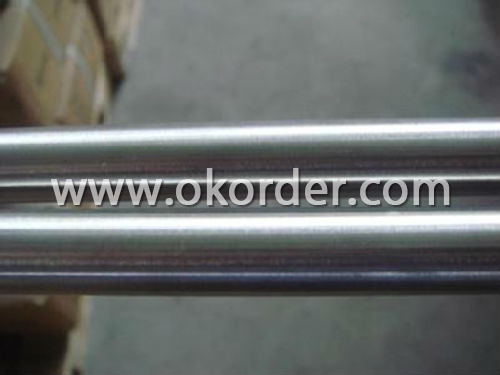
- Q: Can stainless steel bars be bent easily?
- It is not possible to easily bend stainless steel bars. This material is highly resistant to corrosion and possesses great strength, making it a favored option for many uses. However, due to its high strength and hardness, bending stainless steel bars requires specialized equipment and techniques. Typically, hydraulic or mechanical presses are employed in conjunction with heat application to soften the material. Successfully achieving the desired shape requires professional expertise and experience in bending stainless steel bars.
- Q: Can stainless steel bars be welded?
- Yes, stainless steel bars can be welded. Stainless steel is a versatile material that can be easily welded using various welding processes such as TIG (Tungsten Inert Gas) welding and MIG (Metal Inert Gas) welding. However, it is important to note that certain grades of stainless steel may require specific welding techniques and filler materials to achieve optimal results. Additionally, proper cleaning and preparation of the stainless steel surface prior to welding is crucial to ensure a strong and durable weld joint.
- Q: What are the applications of stainless steel bars in the pulp and paper industry?
- The pulp and paper industry relies on stainless steel bars for various important purposes. Firstly, they are commonly used in the construction of machinery and equipment in pulp and paper mills. These bars offer structural support, durability, and corrosion resistance, which are crucial in an environment that involves exposure to chemicals, moisture, and high temperatures. Stainless steel bars are employed in the production of components like pulpers, digesters, screens, and refiners, ensuring the longevity and performance of these machines. Secondly, they are utilized in the production of papermaking screens and drainage elements. These screens play a vital role in removing impurities and controlling the flow of water and fiber during the papermaking process. Stainless steel bars, due to their resistance to corrosion and wear, are an ideal choice for constructing screens that can withstand the harsh conditions of papermaking. Additionally, the smooth surface of these bars allows for efficient drainage, contributing to improved paper quality and productivity. Furthermore, stainless steel bars find application in the drying section of paper machines. This stage involves using large rolls or cylinders to dry the paper by applying heat. Stainless steel bars are used in the construction of these drying cylinders because of their high heat resistance and excellent mechanical properties. They ensure the stability and strength of the drying cylinders and enable efficient heat transfer, resulting in faster and more efficient paper drying. Moreover, stainless steel bars are employed in the construction of tanks and storage vessels in the pulp and paper industry. These tanks are responsible for storing chemicals, additives, and pulp fibers, and they are exposed to aggressive environments. Stainless steel bars with corrosion-resistant properties are necessary to prevent contamination and maintain the integrity of the stored materials. In conclusion, stainless steel bars are essential in the pulp and paper industry. They are used in the construction of machinery and equipment, the fabrication of screens, drying cylinders, and storage tanks. Due to their corrosion resistance, durability, and mechanical properties, stainless steel bars are the ideal choice for withstanding the challenging conditions of pulp and paper manufacturing.
- Q: What is the difference between rough turned and polished stainless steel bars?
- The main distinction between rough turned and polished stainless steel bars lies in their surface finish and dimensional accuracy. Rough turned bars are produced by removing the outer surface of the bar through a turning process, resulting in an unfinished and rough appearance. These bars have a slightly textured surface and may have slight variations in their dimensions. On the other hand, polished stainless steel bars undergo additional processes to achieve a smooth and shiny surface finish. Polishing involves using abrasives or polishing compounds to eliminate imperfections, scratches, or surface defects, resulting in a highly reflective and visually pleasing finish. The polished bars have a sleek and professional appearance. When it comes to dimensional accuracy, polished stainless steel bars are generally more precise than rough turned bars. The polishing process enhances the roundness, straightness, and overall consistency of the bars, ensuring that they meet stringent tolerances and specific dimensional requirements. Both rough turned and polished stainless steel bars have their own applications and advantages. Rough turned bars are often used in situations where the surface finish is not critical, such as in industrial or structural applications. They are also commonly employed as a starting material for further machining processes. Conversely, polished bars are preferred in industries where aesthetics and corrosion resistance are important, such as in architectural, decorative, or high-end manufacturing applications. Ultimately, the choice between rough turned and polished stainless steel bars depends on the specific requirements of the application, including the desired surface finish, dimensional accuracy, and intended use of the bars.
- Q: Are stainless steel bars easy to work with?
- Yes, stainless steel bars are generally easy to work with due to their high strength, durability, and resistance to corrosion. They can be easily cut, shaped, and welded, making them versatile for various applications in construction, manufacturing, and fabrication processes.
- Q: What are the different types of stainless steel bars used in industrial machinery?
- There are several types of stainless steel bars used in industrial machinery, including austenitic stainless steel bars (such as 304 and 316), martensitic stainless steel bars (such as 410 and 420), ferritic stainless steel bars (such as 430), and duplex stainless steel bars (such as 2205). These different types of stainless steel bars offer varying levels of corrosion resistance, strength, and heat resistance, allowing them to be used in different applications within industrial machinery.
- Q: What is the difference between centerless ground and peeled stainless steel bars?
- The main difference between centerless ground and peeled stainless steel bars lies in the manufacturing process. Centerless ground bars are produced by grinding the surface of the stainless steel bar to achieve precise dimensions and a smooth finish. This process removes any imperfections and ensures tight tolerances. On the other hand, peeled stainless steel bars are created by removing the outer layer of the stainless steel bar through a peeling process. This results in a smooth, clean surface while retaining the original size of the bar. Overall, centerless ground bars are more suitable for applications that require precise dimensions, while peeled bars are preferred when a smooth surface finish is the main requirement.
- Q: What are the different types of stainless steel bar finishes?
- There are several types of stainless steel bar finishes, including brushed, polished, satin, and mill finishes.
- Q: How about 440C stainless steel?
- 420 steel than 440C soft, selling point is super rust resistance, good processing, cheap, good toughnessD2 steel is stiffer and has better blade retention than 440C, but it has less toughness and is easier to rust (can only be called semi stainless steel)
- Q: Are stainless steel bars resistant to intergranular corrosion?
- Stainless steel bars, in general, exhibit resistance to intergranular corrosion. The excellent corrosion resistance properties of stainless steel are well-known, encompassing protection against intergranular corrosion. This particular form of corrosion takes place at the grain boundaries of a metal, typically due to the presence of specific elements in the alloy or exposure to high temperatures. Nevertheless, stainless steel bars are typically manufactured using alloys that contain chromium, thus enabling the formation of a protective oxide layer on the metal's surface. This layer of oxide acts as a barrier, effectively preventing the entry of corrosive agents and minimizing the risk of intergranular corrosion. However, it is important to acknowledge that certain stainless steel alloys may still succumb to intergranular corrosion under specific circumstances, such as prolonged exposure to high temperatures or corrosive environments. Therefore, it is of utmost importance to carefully select the appropriate stainless steel grade and ensure proper maintenance in order to preserve the corrosion-resistant attributes of stainless steel bars.
1. Manufacturer Overview
| Location | Zhejiang,China |
| Year Established | 2000 |
| Annual Output Value | Above US$8.3 Million |
| Main Markets | Europe, America |
| Company Certifications | ISO9001:2000 |
2. Manufacturer Certificates
| a) Certification Name | |
| Range | |
| Reference | |
| Validity Period |
3. Manufacturer Capability
| a) Trade Capacity | |
| Nearest Port | Shanghai |
| Export Percentage | 30% |
| No.of Employees in Trade Department | 30 People |
| Language Spoken: | English;Chinese |
| b) Factory Information | |
| Factory Size: | Above 80,000 square meters |
| No. of Production Lines | Above 7 |
| Contract Manufacturing | OEM Service Offered;Design Service Offered |
| Product Price Range | Average |
Send your message to us
304 Stainless Steel Bar
- Loading Port:
- Shanghai Port
- Payment Terms:
- TT or LC
- Min Order Qty:
- 5 Tons m.t.
- Supply Capability:
- 1000 Tons Per Month m.t./month
OKorder Service Pledge
OKorder Financial Service
Similar products
Hot products
Hot Searches
Related keywords



